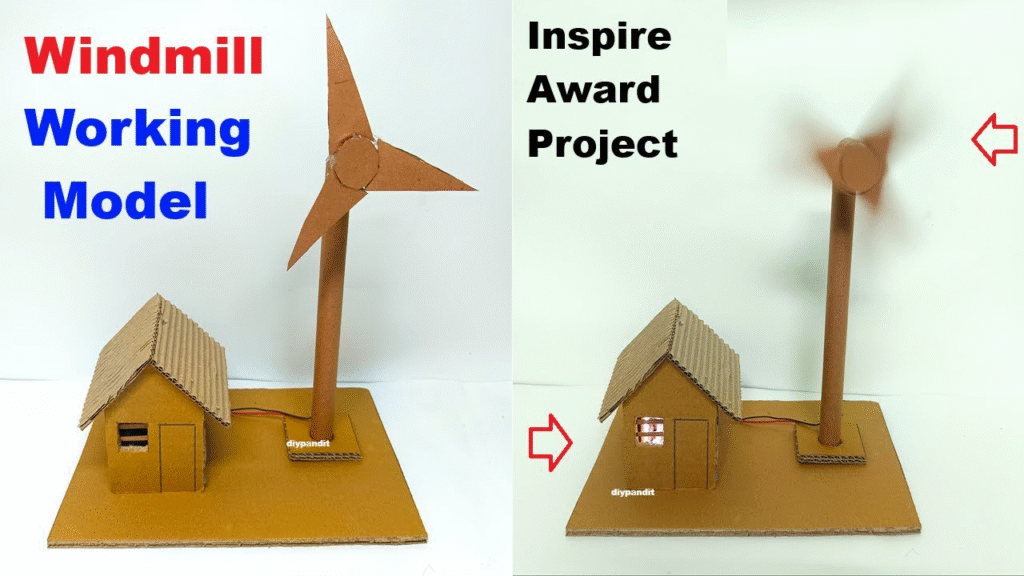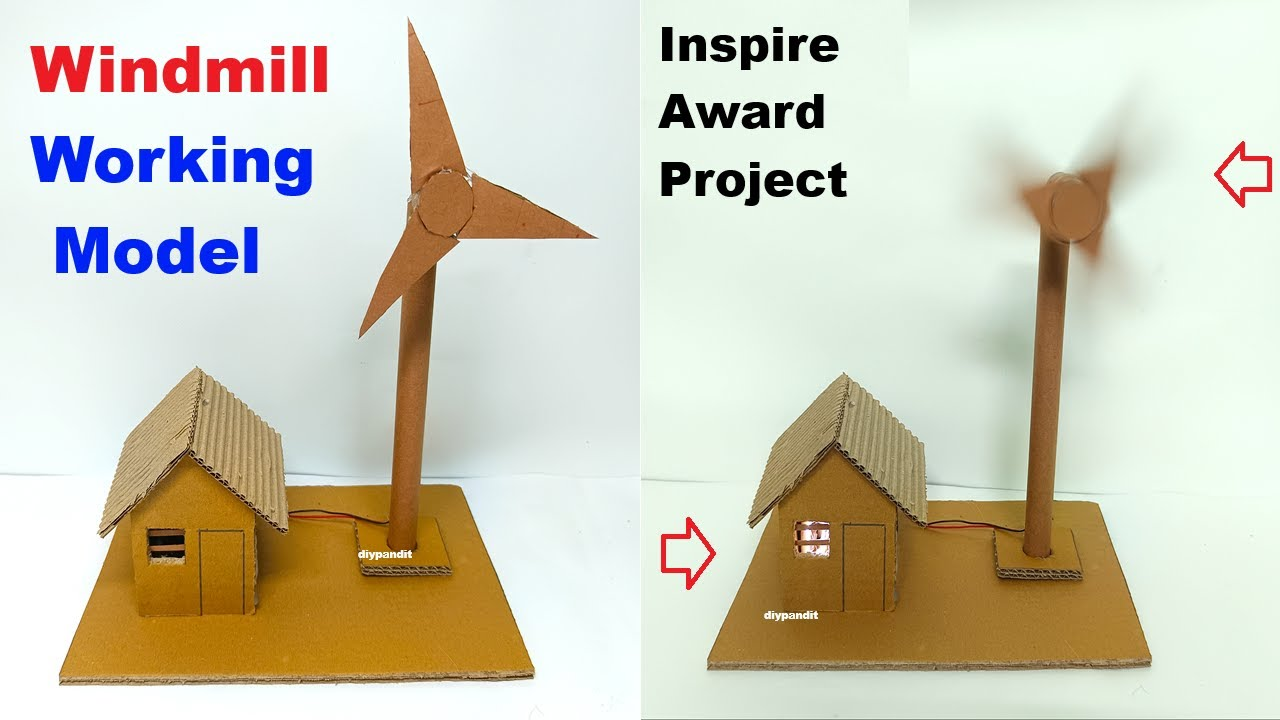Aim / Objective:
To demonstrate how wind energy can be converted into electrical energy using a windmill, showing the principle of renewable energy generation.

Materials Required:
- Cardboard or wooden base
- Small DC motor (3V–12V)
- Plastic fan blades or paper blades
- LED light or small bulb
- Connecting wires
- Glue gun or adhesive
- Straw or stick (for windmill shaft)
- Tape and scissors
- Toy fan or hair dryer (to simulate wind)
Working Principle:
The windmill works on the principle of energy conversion — it converts kinetic energy of wind into mechanical energy, and then into electrical energy.
When wind strikes the blades of the windmill, they rotate. This rotation spins the DC motor, which acts as a generator, producing electric current that lights up the LED.
Procedure:
- Fix the DC motor vertically on a cardboard or wooden base.
- Attach fan blades or make paper/plastic blades and fix them onto the motor shaft.
- Connect the motor terminals to an LED light using wires.
- Direct wind from a toy fan or hair dryer onto the blades to make them spin.
- Observe how the rotation of blades generates electricity and lights up the LED.
Observation:
When air is blown toward the blades, they spin rapidly, causing the motor to generate electricity.
The LED glows, proving that wind energy can be converted into usable electrical energy.
Conclusion:
The windmill working model demonstrates the use of renewable wind energy for generating electricity.
It helps us understand how wind farms and turbines work in real life to produce clean, eco-friendly power without polluting the environment.

